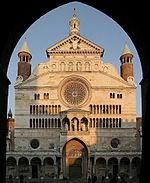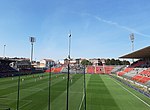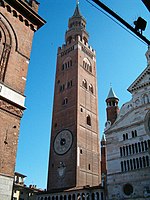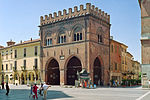Province of Cremona
Province of CremonaProvinces of ItalyProvinces of Lombardy

The province of Cremona (Italian: provincia di Cremona; Cremunés: pruvìncia de Cremùna; Cremish: pruìnsa de Cremùna; Casalasco-Viadanese: pruvìncia ad Cramòna) is a province in the Lombardy region of Italy. Its capital city is Cremona. The province occupies the central section of Padana Plain, so the whole territory is flat, without any mountains or hills, crossed by several rivers, such as the Serio and Adda, and artificial canals, most of which are used for irrigation. The river Po, which is the longest Italian river, is the natural boundary with the adjoining province of Piacenza, while the Oglio separates the province from Brescia.
Excerpt from the Wikipedia article Province of Cremona (License: CC BY-SA 3.0, Authors, Images).Province of Cremona
Piazza IV Novembre, Cremona Giordano
Geographical coordinates (GPS) Address Phone number Nearby Places Show on map
Geographical coordinates (GPS)
| Latitude | Longitude |
|---|---|
| N 45.133333333333 ° | E 10.033333333333 ° |
Address
Lloyds Farmacia Comunale N.6
Piazza IV Novembre 2
26100 Cremona, Giordano
Lombardy, Italy
Open on Google Maps









